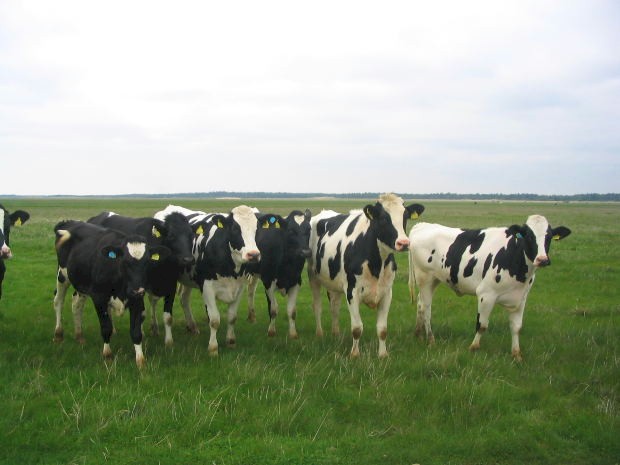 |
| Holstein Friesian Cattle |
Holstein Friesians (often shortened to Holsteins in North America, while the term Friesians is often used in the UK and Ireland) are a breed of dairy cattle that originated in the Dutch provinces of North Holland and Friesland, and Schleswig-Holstein in Northern Germany. They are known as the world's highest-producing dairy animals.
Dutch and German breeders developed the breed with the goal of producing animals that could most efficiently use grass, the area's most abundant resource, as their food. Over the centuries, the result was a high-producing, black-and-white dairy cow.
The Holstein-Friesian is the most widespread cattle breed in the world; it is found in more than 150 countries. With the growth of the New World, a demand for milk developed in North America and South America, and dairy breeders in those regions at first imported their livestock from the Netherlands. However, after about 8,800 Friesians (black-pied German cows) had been imported, Europe stopped exporting dairy animals due to disease problems.
Today, the breed is used for milk in the north of Europe, and for meat in the south of Europe. After 1945, European cattle breeding and dairy products became increasingly confined to certain regions due to the development of national infrastructure. This change led to the need to designate some animals for dairy production and others for beef production. (Previously, milk and beef had been produced from dual-purpose animals.) Today, more than 80% of dairy production takes place north of the line between Bordeaux and Venice, and more than 60% of the cattle in Europe are found there as well. Today's European breeds, national derivatives of the Dutch Friesian, have become very different animals from those developed by breeders in the United States, who use Holsteins only for dairy production.
As a result, breeders have imported specialized dairy Holsteins from the United States to cross-breed them with European black-and-whites. Today, the term "Holstein" is used to describe North or South American stock and the use of that stock in Europe, particularly in Northern Europe. "Friesian" is used to describe animals of traditional European ancestry that are bred for both dairy and beef use. Crosses between the two are described as "Holstein-Friesian".

